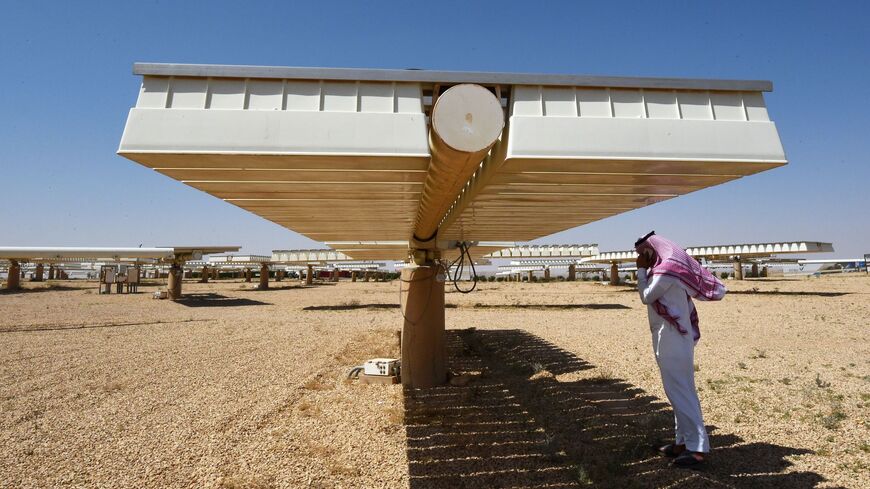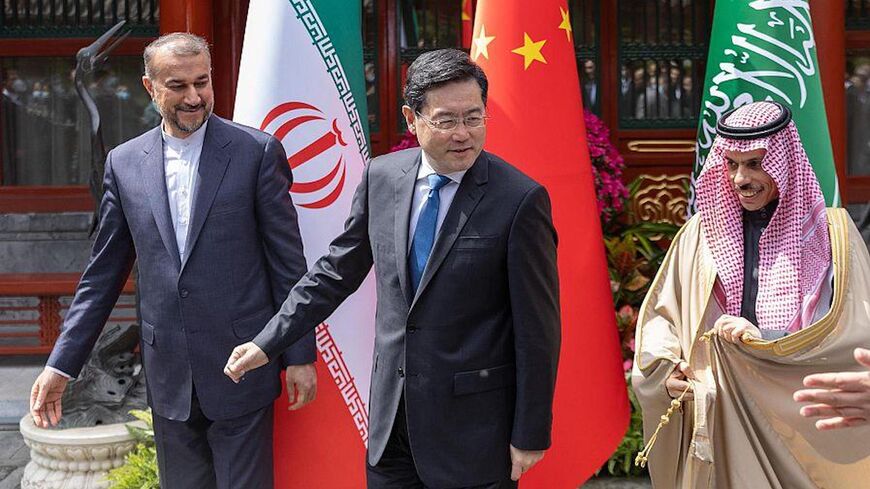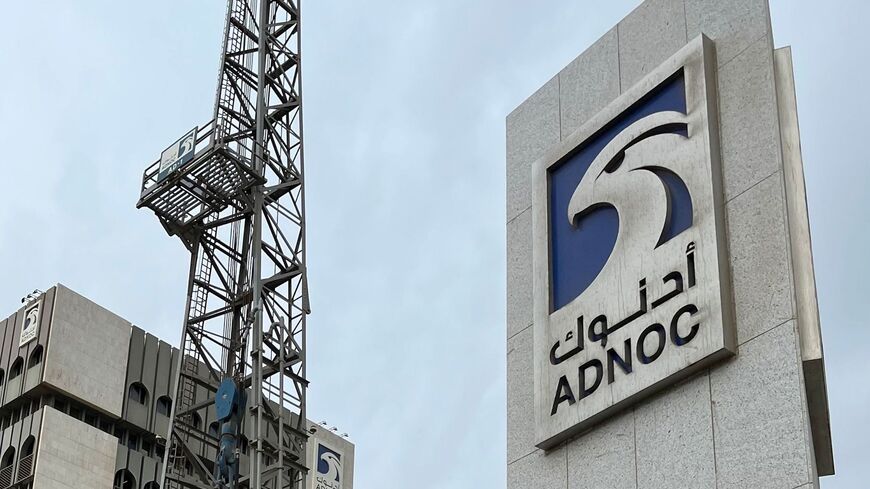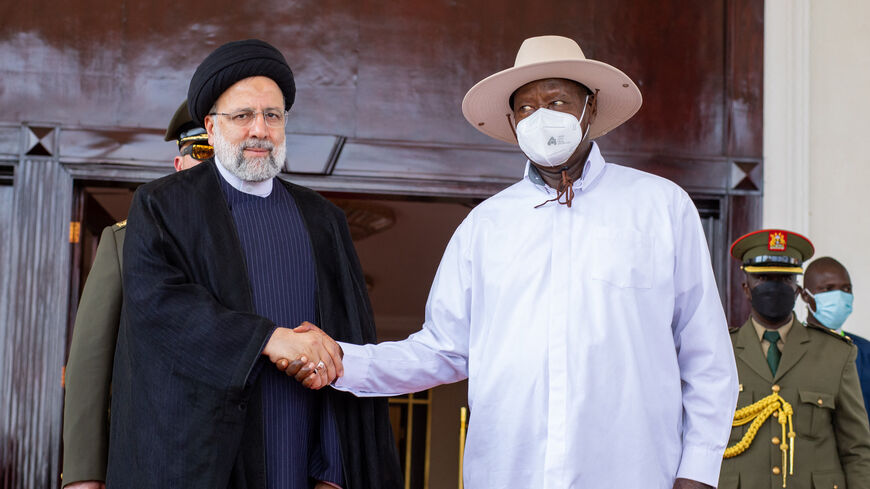The future of renewable energy generation in the Gulf
Al-Monitor Pro Members
Dr. Karen E. Young
Senior Research Scholar, Center on Global Energy Policy, Columbia University
July 12, 2023
There is a global race to build clean energy infrastructure, and the Gulf states are excelling as key competitors in this race. Across Gulf Cooperation Council (GCC) states, there are state-driven projects to generate nuclear energy for electricity, build new solar and wind power plants, and build new green and blue — meaning zero carbon and low carbon — hydrogen production facilities. There is an essential connection between developing renewable power to expand generation capacity and the goal of building out related industries and products that are by definition "green" or zero-carbon. All of these products will require a reliable and plentiful supply of electricity that is generated without burning gas, coal or oil. This is part of what strategists call a circular economy. And even within industries for oil and gas, there is an increasing use of renewable power to make the extraction cleaner, such that there is a way to qualify the carbon intensity of an oil and gas product as it goes to market. There is a critical need to reconcile regional goals for new energy products like green hydrogen production and industrial products like green aluminum with a realistic timeline of renewable electricity generation capacity.
- Solar power is accelerating across the GCC and is consistent with efforts to eliminate the use of gas and oil for power generation in order to allocate those resources for export. In 2012, Dubai set a low-price world record for a purchase agreement for solar power from an independent producer, beginning the innovation for regional solar power deployment.
- Today, Saudi Arabia is building the world's largest single-site solar power plant in Mecca province with a planned generation capacity of 2,060 MW.
- While there are ambitious targets to increase renewable energy in the power mix across the GCC, there is a wide gap between installed renewable power and those future targets.
- Less than three years ago at the end of 2020, the GCC countries' renewable energy sources accounted for less than 3% of installed power capacity. According to IRENA, installed renewable power capacity across the GCC was below 10% of total electricity generation in any state in 2022. (In 2023, the UAE has increased its renewable power capacity to just over 20% thanks to its increase in nuclear power generation.)
- Saudi Arabia targets 50% of its electricity generation from renewable sources by 2030. This will be a challenging target, besides the additional demand coming from industrial projects in its planned smart city, NEOM.
- Emirates Global Aluminum manufactures "green aluminum" with the manufacturing powered by solar and nuclear energy from the local electricity utility EWEC. Its first customer is Germany's BMW, which will buy aluminum made from recycled materials, smelted by clean power.
- UAE state oil company ADNOC's onshore facilities are supplied by nuclear and solar energy, making its oil and downstream products industry-leading low-carbon intensity products.
- Saudi Arabia aims to produce 650 tons per day (around 0.5 mtpa) of hydrogen and 1.2 mtpa of ammonia by 2025 for export.
- Oman and the UAE’s Abu Dhabi National Oil Company (ADNOC) target 1 mtpa of green hydrogen output by 2030.
- Qatar aims to produce 1.2 mtpa of blue ammonia by 2026.
- For Gulf states to produce clean energy products, they must rapidly increase their domestic supply of renewable power. The current scale of renewable energy generation, which is less than 1 gigawatt (GW) — around 4,000 megawatts — is not sufficient to meet the proposed targets. One estimate is that renewable energy capacity in the GCC would need to increase to almost 40-60 GW — a nearly 60-fold rise — by 2030 to meet the region’s hydrogen targets.
Scenario 1: Nuclear power has proven to be a game changer for the UAE to boost its renewable power generation capacity. Saudi Arabia will be able to do the same.
In addition to solar and wind generation, nuclear power will enable the Gulf states to accelerate their circular economy ambitions, while also building out capacity across the energy sector in hydrogen facilities and the production of green industrial products for export. Nuclear power could also accelerate the distribution of electricity across the broader region, in transmission and interconnection lines to Iraq, Egypt and beyond, making the GCC a regional power supply hub.
Scenario 2: Solar and wind power generation will accelerate in the GCC, but not in sufficient volume or in sufficient geographic reach to meet demand for industrial or hydrogen acceleration.
Moreover, a resistance to phase out existing gas-fired and even oil-fired electricity generation in weaker Gulf economies will lead to increasing pressure on electricity supply and further disaggregate the GCC states on their ambitions for net zero targets and their ability to reduce the subsidies of existing electricity rates. In this scenario, we will find more advantage for those GCC members that can sell and transmit excess power to their neighbors, and further economic disaggregation between the six states, weakening their political bargaining power as well as their ability to manage the energy transition that over time makes their oil and gas dependency a severe fiscal vulnerability.
Scenario 3: The global investment ecosystem for green and blue hydrogen production will accelerate more in the United States, along with a more rapid build-out of sustainable infrastructure and renewable power generation that surpasses the projects and viability of that in the GCC.
The Gulf energy transition in this scenario slows down, becomes more entrenched in traditional oil and gas exports, and struggles to meet domestic and regional electricity demand.
All three scenarios are possible over time, but in the short term, we are likely to see the combination of scenarios 1 and 3, in which there is a simultaneous effort to accelerate nuclear power in the Gulf, along with renewable energy capacity for industrial uses. In the United States and Europe, industrialization policy will also privilege renewable energy sectors, including green hydrogen production. We could see a rise in the cost of component materials, which could increase geopolitical tensions and especially relationships between the United States and the Gulf states across a number of energy security issues.
Karen E. Young is a senior research scholar at the Center on Global Energy Policy at Columbia University. She was previously founding director of the Program on Economics and Energy at the Middle East Institute. She was a resident scholar at the American Enterprise Institute, and taught courses on the international relations and economy of the Middle East at George Washington University and at the Johns Hopkins School of Advanced International Studies. Before joining AEI, she served as senior resident scholar at the Arab Gulf States Institute, a research and visiting fellow at the Middle East Centre of the London School of Economics and Political Science, and an assistant professor of political science at the American University of Sharjah in the UAE.
We're glad you're interested in this memo.
Memos are one of several features available only to PRO Expert members. Become a member to read the full memos and get access to all exclusive PRO content.

Already a Member? Sign in
The Middle East's Best Newsletters
Join over 50,000 readers who access our journalists dedicated newsletters, covering the top political, security, business and tech issues across the region each week.
Delivered straight to your inbox.
Free
What's included:
Free newsletters available:
- The Takeaway & Week in Review
- Middle East Minute (AM)
- Daily Briefing (PM)
- Business & Tech Briefing
- Security Briefing
- Gulf Briefing
- Israel Briefing
- Palestine Briefing
- Turkey Briefing
- Iraq Briefing
Premium Membership
Join the Middle East's most notable experts for premium memos, trend reports, live video Q&A, and intimate in-person events, each detailing exclusive insights on business and geopolitical trends shaping the region.
$25.00 / month
billed annually
$31.00 / month
billed monthly
What's included:
Memos - premium analytical writing: actionable insights on markets and geopolitics.
Live Video Q&A - Hear from our top journalists and regional experts.
Special Events - Intimate in-person events with business & political VIPs.
Trend Reports - Deep dive analysis on market updates.
We also offer team plans. Please send an email to pro.support@al-monitor.com and we'll onboard your team.
Already a Member? Sign in







